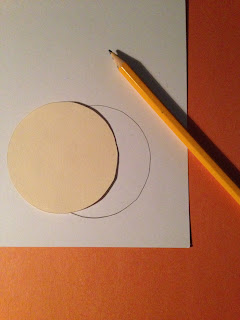 Our minds and our eyes work together to allow us to understand the world around us. The mind takes the information received by the eyes and sorts it out so that we can perceive things such as colour, brightness, movement, depth, distance, space, and all the other elements that make up our visual environment. In most circumstances, this process is pretty straightforward and we can trust that the things we see are real, but artists have known for a long time that the mind can be fooled! Certain techniques can be used to manipulate the mind into "seeing" things that aren't really there. We call these tricks Optical Illusions. Artists have used various types of illusions in their artwork for centuries to create a sense of depth, space, and even motion into their flat, static paintings and drawings. In Victorian times, people became fascinated with the idea of optical illusions that didn't just operate on a two-dimensional plane, but incorporated movement into their visual trickery. A whole slew of spinning, flipping, turning mechanisms were developed. (Eventually these devices paired up with another 19th Century invention, photography, and the animated motion picture movie was born.)
Our minds and our eyes work together to allow us to understand the world around us. The mind takes the information received by the eyes and sorts it out so that we can perceive things such as colour, brightness, movement, depth, distance, space, and all the other elements that make up our visual environment. In most circumstances, this process is pretty straightforward and we can trust that the things we see are real, but artists have known for a long time that the mind can be fooled! Certain techniques can be used to manipulate the mind into "seeing" things that aren't really there. We call these tricks Optical Illusions. Artists have used various types of illusions in their artwork for centuries to create a sense of depth, space, and even motion into their flat, static paintings and drawings. In Victorian times, people became fascinated with the idea of optical illusions that didn't just operate on a two-dimensional plane, but incorporated movement into their visual trickery. A whole slew of spinning, flipping, turning mechanisms were developed. (Eventually these devices paired up with another 19th Century invention, photography, and the animated motion picture movie was born.)
The thaumatrope is a very simple device that is fun to make and play with. Here's what you'll need to make your own:
The first thing you'll need to make is a circle of card stock. This will be both the basis for your thaumatrope and the template for your drawings. This is important because if your drawings aren't aligned properly, the illusion created by the spinning thaumatrope won't work.
The best way to make sure your images are aligned is to match them up with two holes made across opposite sides of the centre of your circle. One easy trick for finding the centre of the circle is to cut out a second circle of the same size, to fold it in half, line up the folded semicircle with your original card stock circle, and trace a line along the fold.
Now that you have your template, trace it onto a piece of paper and sketch out the image you would like to appear on your thaumatrope. Don't forget to add the holes- this will be crucial for aligning your pictures (I suggest making them with a large pin or sewing needle).
Now you have to decide what part of the image will go on each side of the thaumatrope. I chose to put the elephant on one side and the fireworks on the other. To make sure everything is in alignment, trace the pictures from your original sketch. This is where the holes come in handy; if you line them up on both sides, the whole thing should work magically when it's put together.
If you like, you can add some colour to your creation.
Now cut out both drawings.
This part gets a little tricky. As I've already mentioned, proper alignment is key. Glue the images to the card stock, but make sure those holes are in the right place! Once your first image is in place, flip the card over along the same axis as the holes, i.e. the top on one side will become the bottom on the other. Then glue the other image the same way as the first.
All that's left to do now is to add two loops of string through the holes, one on either side.
Now you're ready to create the illusion of two images blending into one. Simply grasp one thread in each hand, pull them taught, and twist the strings back and forth between your thumb and forefinger.
This is a video of my firework elephant in action:
Here are some other examples of thaumatropes for a little inspiration:
If you'd like to learn more about the wonderful world of Victorian moving picture devices, this book is a great resource.














